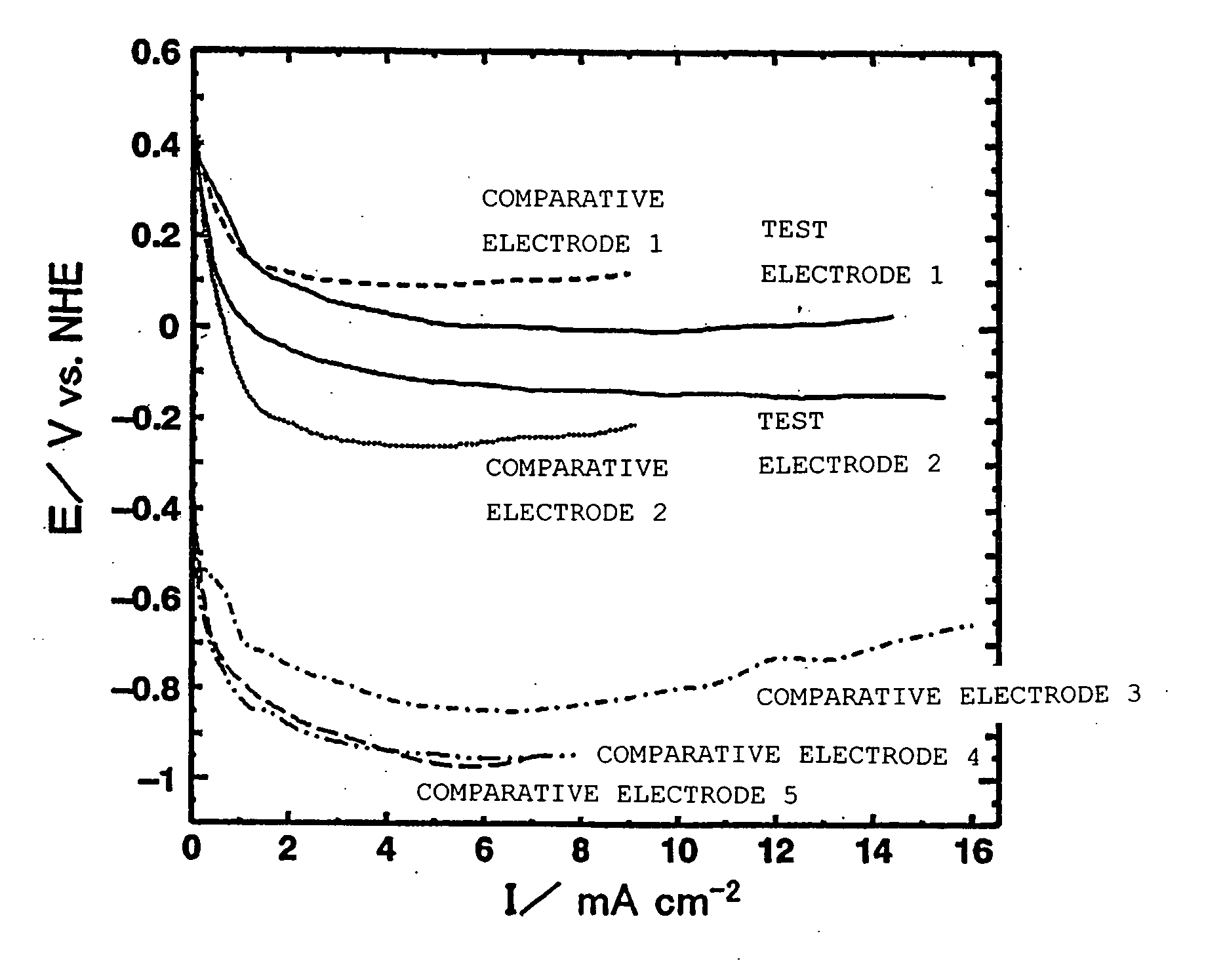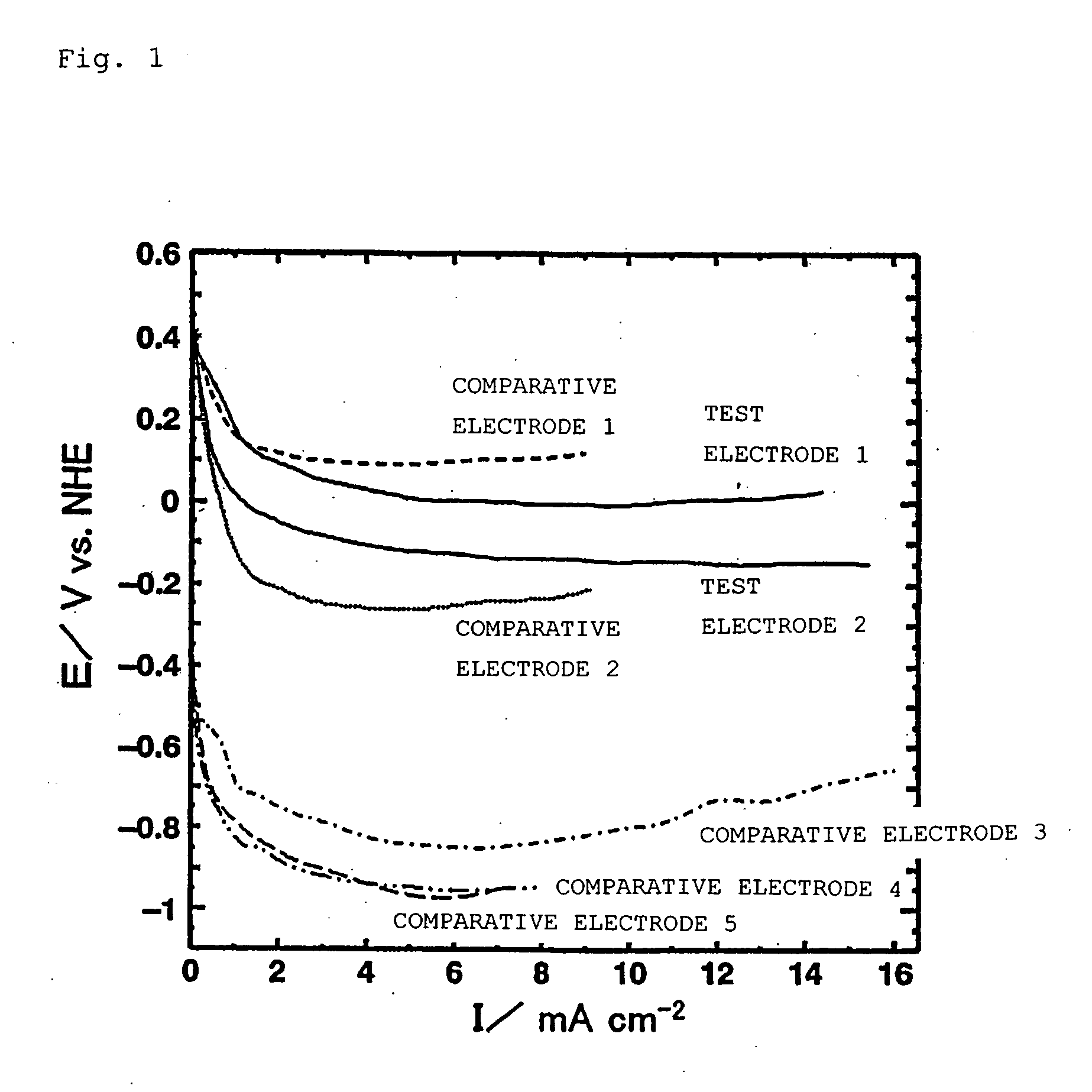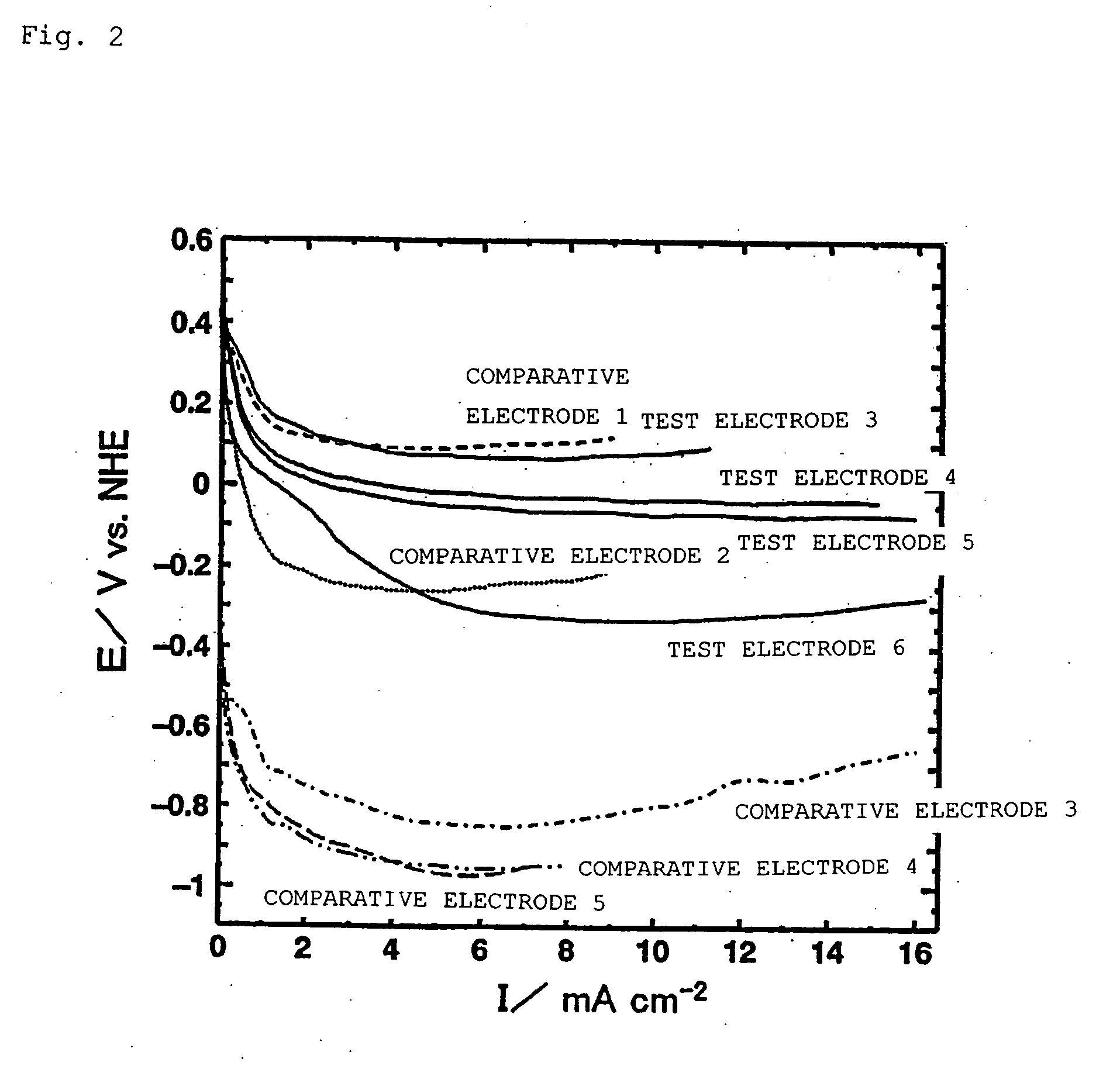Method for manufacturing oxygen reduction electrode, oxygen reduction electrode and electrochemical element using same
a technology of oxygen reduction electrode and manufacturing method, which is applied in the direction of instruments, cell components, material electrochemical variables, etc., can solve the problems of oxygen degradation of these members, achieve the effect of reducing overvoltage, reducing overvoltage, and reducing oxygen electrochemical reduction
- Summary
- Abstract
- Description
- Claims
- Application Information
AI Technical Summary
Benefits of technology
Problems solved by technology
Method used
Image
Examples
example 1
Preparation of Test Electrodes 1 and 2
[0135] Polyacrylonitrile was used as a synthetic polymer containing nitrogen. This synthetic polymer was first carbonized at 800° C. in a nitrogen atmosphere, and then steam activated at 900° C. The resulting charcoal-based materials were used to prepare test electrodes 1 and 2, respectively. These charcoal-based materials were confirmed by x-ray analysis to contain nitrogen. In infrared spectroscopy, these charcoal-based materials exhibited an absorption peak caused by electron binding including nitrogen in a wave number range of from about 2000 cm−1 to 2300 cm−1 as characteristic absorption. These results confirm that these were not perfect charcoal consisting solely of carbon but charcoal-based materials derived from the molecular structure of the precursor before carbonization.
[0136] The resulting charcoal-based materials were pulverized to a maximum diameter of 10 μm or less. 25 μg of the resulting powder was dispersed in 5 μl of an ethan...
example 2
Preparation of Test Electrode 3
[0139] Acrylic fiber of polyacrylonitrile of the nitrogen-containing synthetic polymer as the main component was carbonized at 800° C. in a nitrogen atmosphere, and steam activated at 900° C. 4 parts by weight of the resulting charcoal-based material (the mean particle size of about 5 μm), 4 parts by weight of a lower manganese oxide (mixture of Mn3O4 and Mn5O8, the mean particle size of about 10 μm), 1 part by weight of carbon black and 0.2 parts by weight of a fluororesin binder (PTFE) were mixed together. A sheet was prepared from the resulting mixture using a conductive base of nickel-plated stainless gold mesh (thickness 0.15 mm, 25 mesh) as the core, and a fluororesin porous sheet (porosity about 50%, thickness 0.2 mm) was crimped to one side of this sheet to prepare test electrode 3 with a thickness of about 3 mm.
example 3
Preparation of Test Electrode 4
[0140] Acrylic fiber having polyacrylonitrile as the main component was used as the nitrogen-containing synthetic polymer. 5 parts by weight of this synthetic polymer and 2 parts by weight of zeolite powder were mixed with water as the solvent, and molded and solidified to obtain a mixture. This mixture was carbonized at 900° C. in a nitrogen atmosphere. Further activation treatment by steam was carried out at 900° C. to obtain activated charcoal. In the resulting charcoal-based material, the inside of the solid material consisted of a carbon component and an inorganic component. X-ray analysis was performed to investigate the elements. The results confirmed that nitrogen was contained in the carbon component, and that silicon (Si) and aluminum (Al) from the zeolite were contained in the inorganic component. The aforementioned charcoal-based material was pulverized to a maximum diameter of 20 ’m or less. 25 μg of the resulting powder was dispersed in ...
PUM
| Property | Measurement | Unit |
|---|---|---|
| temperature | aaaaa | aaaaa |
| temperature | aaaaa | aaaaa |
| temperature | aaaaa | aaaaa |
Abstract
Description
Claims
Application Information
 Login to View More
Login to View More - R&D
- Intellectual Property
- Life Sciences
- Materials
- Tech Scout
- Unparalleled Data Quality
- Higher Quality Content
- 60% Fewer Hallucinations
Browse by: Latest US Patents, China's latest patents, Technical Efficacy Thesaurus, Application Domain, Technology Topic, Popular Technical Reports.
© 2025 PatSnap. All rights reserved.Legal|Privacy policy|Modern Slavery Act Transparency Statement|Sitemap|About US| Contact US: help@patsnap.com



